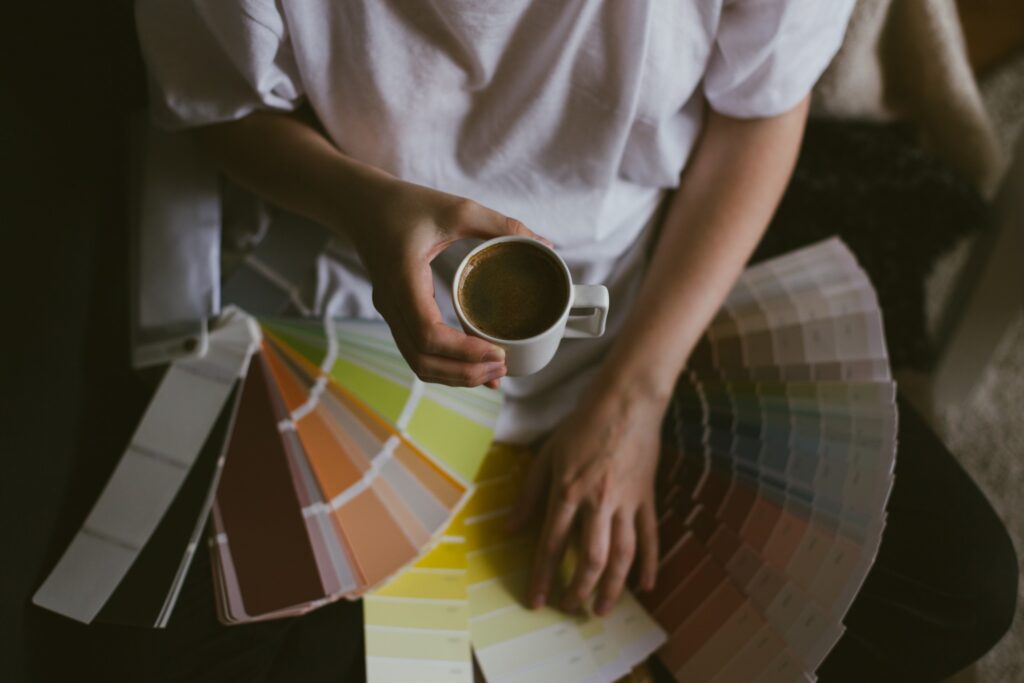
There’s nothing quite like a fresh coat of paint to make you fall in love with a room. This fun update can change the whole look and feel of a space without breaking the bank. But after all the effort of painting your walls or the investment of hiring a professional, how do you keep it looking great? You follow some tried-and-true tips for interior paint maintenance!
At Bella Vista,we keep your home looking great inside and out. As your go-to professional painters in Portland, OR, Vancouver, WA, and the surrounding areas, we bring our A-game to every job. Reach out today for a free consultation and estimate.
Paint Maintenance Starts with Excellent Processes
Before we can talk about tips for interior paint maintenance, we need to talk about preparation, products, and application. If you skimp on any of these parts of the process, your paint job will not last as long as it should. Here are the basics to consider as you get ready for this project. And if you don’t want to bother with it, hire a pro who includes prep work in their bid.
Preparation

Unless you have a brand new home that has not yet been lived in, your walls and ceiling need some TLC before you start painting. At a minimum, wipe them down to remove cobwebs and other marks. Then, fill in all the little pin and nail holes. If there are bigger areas of damage, invest in some patching material to get everything in good shape before painting.
Painter’s tape is the DIY painter’s best friend. While pros might be able to do great work without taping everything off, most of us need to do this step. Taping will help you protect your woodwork and keep crisp lines in areas where different colors come together.
Products
You do not have to use top-shelf paint to get good results. But the higher the quality paint, the longer it will likely last and the less of it you will probably need. Determine your budget, and then buy the best option within that range.
It’s also crucial to choose the right paint for your particular surfaces. The texture, location, and how much sunlight it gets will all help determine which paint is best.

When budgeting and buying, don’t forget to think about your brushes and rollers. If you go too low-cost, you may end up frustrated with the results. Cheaper tools can leave hairs, fluff, or brush strokes that create more work for you.
Application
A haphazard application plan will result in a sloppy paint job. It’s worth watching a few video tutorials to learn some tips and tricks before starting. Be sure you know the following:
- When to use rollers vs. brushes and which types to use for your ceiling or wall’s texture
- How to paint corners and along baseboards without a mess
- How to use a roller effectively
- How many coats to apply (Spoiler – almost every surface needs at least two coats! More coats will give you a longer-lasting result.)
Pro Tips for Interior Paint Maintenance
Once you’ve invested the time and money in your paint job, either on your own or with a professional’s help, it’s time to keep it looking good. Here are our tips for interior paint maintenance throughout the year.
Clean your walls a few times each year.

Dust, fingerprints, and other grime can build up on walls more quickly than you think. This is especially true if there is a smoker in the home or if you have a wood-burning fireplace.
Take time every few months to wipe them down with some slightly soapy water. Spring and fall are perfect times for this project. You’ll be surprised how dirty the water is when you do this!
Kitchen walls may need even more attention. They are likely to have grease built up, so you might have to use a bit more elbow grease on these areas or do them more frequently.
Touch up minor dings and blemishes.
After you do a seasonal wall washing, do any touch-ups needed to cover marks that won’t wash off or areas that have chipped. This maintenance step helps ensure that small blemishes don’t grow into bigger problems.
Watch for mold and mildew.
Our damp Pacific Northwest winters make mold and mildew very happy. Any place with a lot of moisture or high humidity can be fertile ground for fungus. Keep an eye out for any signs of mold or mildew so you can deal with it quickly while the problem is small. If it spreads too far, you will likely need a professional to take care of it.

To help prevent it in the first place, use mold and mildew-resistant paint in wet areas like bathrooms. And be sure to open windows, use fans, and run dehumidifiers to help keep your walls dry.
Give your furniture a buffer.
Tables, chairs, and sofas are major culprits for inflicting wall scuffs and other damage. Allow sufficient space between your furniture and walls to help maintain your interior paint. Decorative details like chair rails and wainscotting also help minimize wear and tear on your walls.
Be strategic with your wall-hanging hardware.
With toggles and wall anchors, we now have the luxury of hanging photos and artwork anywhere, stud or not. However, that type of hardware does more damage to the wall than nails do, requiring bigger patches and repairs down the road. Whenever possible, hang your items where there is a stud to minimize this problem.
The Best Tip? Hire a Professional Contractor
Exterior and interior painting jobs are definitely DIY-friendly. But that does not mean they are simple and fast projects. For results you love that don’t use up your time and energy, hiring a professional painter is the way to go.
Home and business owners in the Portland Metro area rely on Bella Vista to do the job right. And we do it with a smile! Contact our family-owned company today for your free estimate.